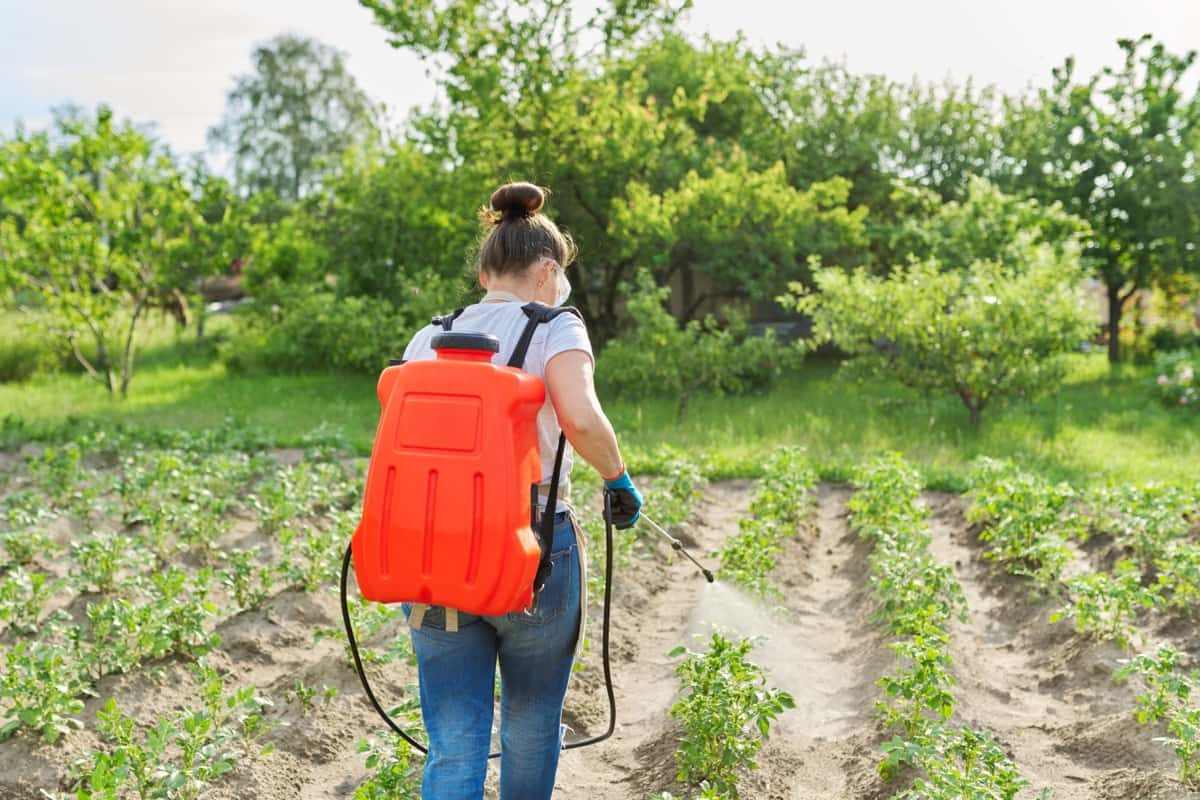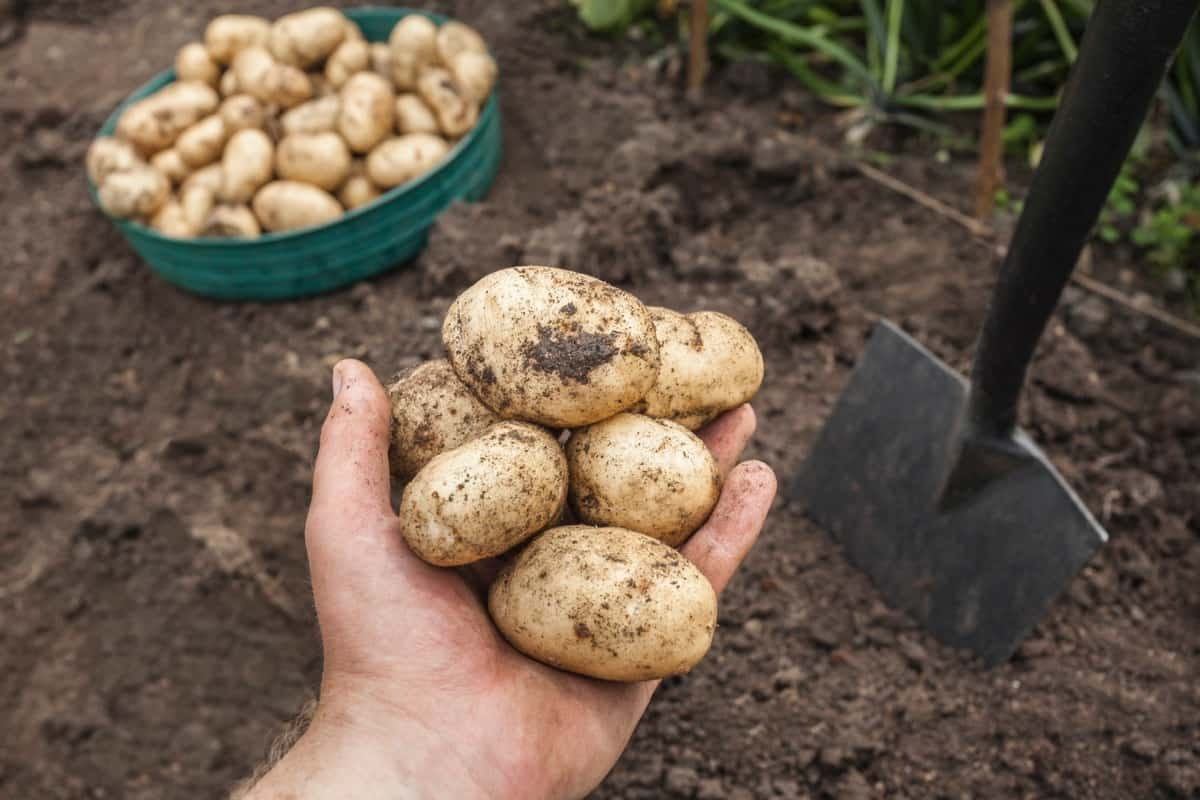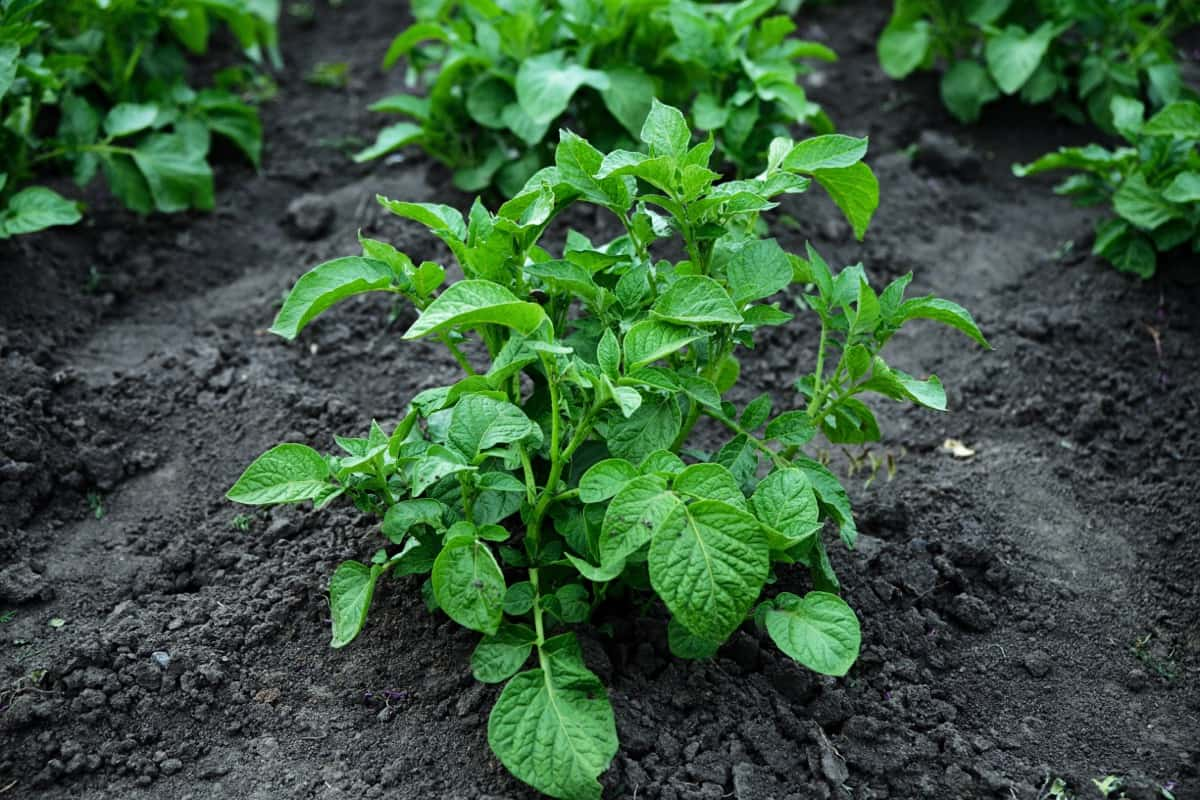Potato plants are susceptible to various problems that may lead to a poor yield or even no harvest. Potato plants can face a multitude of problems throughout their growth cycle. However, with proper care and attention, many of these issues can be prevented or effectively treated. Regular monitoring and maintenance are crucial in ensuring the health and productivity of your Potato crop. By identifying common problems such as pests, diseases, nutrient deficiencies, or overwatering early on, you can quickly address them before they cause severe damage to your plants.

8 Common Problems with Potato Plants
Preventing Potato Late Blight: Effective Control Strategies
Potato late blight is a fungal disease that can cause significant damage to Potato plants if left untreated. It’s essential to take preventative measures and effective control strategies to avoid spreading this disease. One essential strategy is ensuring proper irrigation, as overwatering or poorly drained soil can lead to increased humidity and promote the growth of the fungus responsible for late blight.
Additionally, it’s crucial to plant resistant varieties and rotate crops frequently. Regularly inspecting your Potato plants for signs of late blight is also necessary. Look out for dark spots on leaves and stems, which may be accompanied by a white powdery substance. If any sign of infection is present, remove infected leaves immediately and dispose of them properly.
Dealing With Potato Beetle Infestations: Natural Remedies
One effective method is handpicking the beetles off your plants. While admittedly time-consuming, it’s a great way to eliminate them before they can do too much damage. You can also place sticky traps around your garden or Potato patch, preventing the beetles from reaching your precious crop. Another organic approach involves using neem oil or insecticidal soap on your Potatoes. Both work by suffocating the pests and preventing them from laying eggs on the leaves. It’s important not to overuse these remedies, though, as they could harm beneficial insects such as bees.
Controlling Fungal Diseases in Potato Plants
Fungal diseases can be a real headache for Potato growers, as they are extremely difficult to control once they take hold. These diseases are caused by various fungi that thrive in moist and humid conditions, which makes them particularly problematic in areas with high rainfall or irrigation.
One of the most common fungal diseases affecting Potatoes is early blight. This disease causes dark lesions on infected plants’ leaves, stems, and tubers, which can reduce yield and quality. It’s important to practice good crop rotation and sanitation techniques to control early blight. Another fungal disease that affects Potatoes is late blight.
This disease is caused by a different fungus than early blight and can cause devastating losses if left unchecked. Symptoms include water-soaked spots on leaves that quickly turn brown before spreading to other parts of the plant. To prevent late blight from taking hold in your Potato crop, it’s essential to scout regularly for signs of infection and apply fungicides when necessary. However, because this disease is notoriously difficult to control once it has taken hold, prevention is key.
Identifying and Treating Potato Scab
Potato scab is a common disease that affects Potato plants. It appears as rough, scabby patches on the surface of the Potatoes, making them less desirable for consumption. Identifying Potato scab can be relatively easy once you know what to look for. Symptoms include small brown spots or lesions on the skin of the Potato tubers. These will eventually grow and merge to form larger patches over time. Fortunately, several treatments are available for controlling and preventing this disease from spreading further.
One effective method involves using acid-based fertilizers or adding organic matter, such as compost, into your soil before planting season begins. Another treatment option is to rotate crops regularly with non-susceptible plants like legumes or grasses to break up any potential infestations in your garden’s soil. It’s important to note that maintaining proper irrigation practices during hot weather helps prevent dryness which may promote the growth of fungal spores causing more damage.
Managing Nutrient Deficiencies in Potato Plants
Potatoes require a lot of nutrients to grow well. However, nutrient deficiencies can occur for various reasons, such as poor soil quality or improper fertilization practices. It is important to identify the specific nutrient deficiency your Potato plants face. Common signs include yellowing leaves, stunted growth, and reduced yields. Once you have identified the problem, you can take appropriate measures to address it. One way to manage nutrient deficiencies is by improving the soil quality through regular amendments such as compost or manure.
In case you missed it: Best Soil Composition for Potato Cultivation

This helps to provide a steady supply of nutrients throughout the growing season. Another option is to use fertilizer specifically formulated for Potatoes based on their unique nutritional needs. It’s important not to over-fertilize, though, as this can lead to other problems, such as excessive vine growth or even burnout of roots. In addition, rotating crops annually with legumes like peas or beans helps replenish soil nutrients naturally, promoting healthy plant growth.
Preventing Potato Plant Wilting and Yellowing Leaves
Potato plants are notoriously susceptible to wilting and yellowing leaves, which various factors can cause. One common cause is inadequate watering. Potato plants require consistent moisture throughout their growing cycle, so water them regularly. Another possible cause of wilting and yellowing is nutrient deficiency. Potatoes need adequate nitrogen, phosphorus, potassium, and other key nutrients to thrive. If you suspect your soil may be lacking in these essential elements, consider adding fertilizer or compost to your garden beds.
Pests and diseases can also contribute to wilted or yellowed Potato leaves. Watch for signs of infestation, such as chewed leaves or visible insects on the foliage. In some cases, applying insecticides or fungicides to protect your crops may be necessary. Environmental stressors such as extreme heat or cold can also impact the health of Potato plants. Ensure they are planted in a suitable location with plenty of sun exposure but not too much direct heat.
Managing Excessive Vine Growth in Potato Plants
Managing excessive vine growth in Potato plants is crucial to ensure the health and quality of your crop. Overgrowth can lead to tangled vines, reduced airflow, and increased susceptibility to disease. One way to control excessive vine growth is by pruning the plant regularly. Trimming back the vines will promote better air circulation and prevent tangling that could lead to snapped stems or broken tubers.
Another effective method is limiting water supply during periods of high vegetative growth. This technique stimulates root development while reducing top growth, resulting in a stronger plant with fewer but more robust stems. Choosing the right variety for growing conditions can also help manage excessive vine growth. Some varieties are naturally bushier than others, making them less likely to produce long, sprawling vines. Maintaining proper soil health through regular fertilization ensures plants get all the necessary nutrients without overstimulating their growth.
Dealing With Potato Tuber Rot
Potato tuber rot is a common problem among Potato farmers and gardeners. It can occur during the growing season or in storage, causing significant losses of crops. To prevent Potato tuber rot, keeping your plants dry by watering them appropriately and ensuring good drainage is essential. Ensure you harvest Potatoes when they are mature, as immature ones are more susceptible to fungal infections.
If you notice any signs of Potato tuber rot, such as softness or discoloration on the surface of your Potatoes, remove them immediately. Also, avoid storing infected Potatoes with healthy ones since they can easily spread the infection. Another effective strategy for dealing with this problem is using fungicides. However, ensure you only use approved products and follow their application instructions carefully.
In case you missed it: Project Report of 1-Acre Sweet Potato Farming: Production Economics, Cultivation Cost, and Profit

Conclusion
Growing Potatoes can be a rewarding experience but comes with its own challenges. Identifying the common problems that Potato plants face and taking the necessary steps to treat them to have a successful harvest is important. Keep your soil healthy and properly nourished for strong roots and robust growth. Regularly check your plants for any symptoms of disease or pests so that you can take action early on before they become major problems.
- Feed Your Flock for Less: Top 10 Tips to Save on Chicken Feed
- Ultimate Guide to Ossabaw Island Hog: Breeding, Raising, Diet, and Care
- Hatching Answers: The Top 10 Reasons Your Chickens Aren’t Laying Eggs
- Eggs and Economics: Breaking Down the Cost of Raising Backyard Chickens
- Defend Your Greens: Proven Methods to Keep Iguanas Out of Your Garden
- Ultimate Guide to Cinnamon Queen Chicken: A Comprehensive Guide for Beginners
- Ultimate Guide to California Tan Chicken: Breeding, Raising, Diet, Egg-Production and Care
- Ultimate Guide to Marsh Daisy Chicken: Breeding, Raising, Diet, and Care
- 10 Types of Chicken Farming Businesses You Can Start for Profits